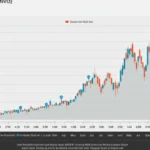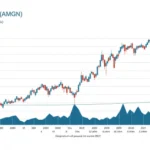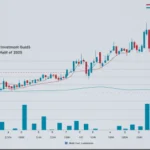Johnson & Johnson (NYSE: JNJ) stands as a titan of the global healthcare industry. For decades, it has been a cornerstone of conservative portfolios, known for its unshakeable stability and a dividend payment that has grown for over 60 consecutive years. However, the JNJ of today is not the same company it was just a few years ago.
Following the strategic spinoff of its consumer health division, Kenvue, JNJ is now a more focused, streamlined giant centered on two powerful pillars: Innovative Medicine and MedTech. As we look to the second half of 2025, investors are weighing the company’s compelling growth drivers against significant headwinds, including the looming patent cliff for a blockbuster drug and persistent legal challenges.
This deep-dive analysis will break down the essential components of JNJ’s investment case for H2 2025, exploring its new corporate structure, key growth engines in MedTech and oncology, and the risks that could shape its stock performance.
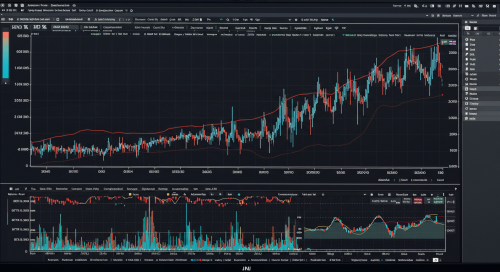
1. The “New” Johnson & Johnson: A Sharpened Two-Pillar Strategy
To understand JNJ in late 2025, you must first forget the old image of a company that sells everything from Band-Aids to cancer drugs. The spinoff of Kenvue (owner of brands like Tylenol, Listerine, and Neutrogena) in 2023 was a landmark moment, designed to unlock value and sharpen the company’s focus on higher-growth, higher-margin businesses.
The “new” JNJ is built on two core segments:
- Innovative Medicine (Formerly Janssen Pharmaceuticals): This is the company’s drug development and commercialization engine. It boasts a formidable portfolio of treatments in oncology, immunology, neuroscience, and cardiovascular diseases. This division is the primary source of JNJ’s profits and is responsible for developing the next generation of blockbuster drugs.
- MedTech (Medical Devices): This segment provides a vast array of surgical tools, orthopedic implants, and vision care products used in hospitals and clinics worldwide. Historically viewed as a slower-growing but stable part of the business, JNJ is now aggressively investing to turn MedTech into a major growth driver through strategic acquisitions.
This new structure allows for more dedicated capital allocation and a clearer story for investors: JNJ is a pure-play healthcare innovation company.
2. Key Growth Drivers for H2 2025
As the market looks for catalysts in the second half of 2025, three areas will be critical to JNJ’s stock performance.
a) MedTech Ascendant: The Rise of the Devices Business
For years, the MedTech division played a supporting role to the pharmaceutical business. That has changed dramatically. JNJ is using its immense financial strength to acquire cutting-edge companies in high-growth areas of the medical device market.
- Abiomed Acquisition: The $16.6 billion purchase of Abiomed brought the Impella heart pump into JNJ’s portfolio. These tiny pumps are a game-changer for treating severe coronary artery disease and cardiogenic shock, a market with significant unmet needs and growth potential.
- Shockwave Medical Acquisition: In a more recent $13.1 billion deal, JNJ acquired Shockwave Medical. Shockwave is the leader in intravascular lithotripsy (IVL), a groundbreaking technology that uses sonic waves to break up calcified plaque in arteries, making procedures safer and more effective. This positions JNJ at the forefront of cardiovascular intervention.
H2 2025 Outlook: By the second half of 2025, the integration of these companies will be well underway. Investors will be looking for strong sales growth from these new platforms to prove the acquisition strategy is paying off. Success here is crucial to demonstrating that JNJ can generate robust growth beyond its pharmaceutical pipeline.
b) The Oncology Powerhouse: Carvykti Leads the Charge
Within the Innovative Medicine division, the oncology franchise is the crown jewel. While drugs like Darzalex (for multiple myeloma) continue to generate massive sales, the most exciting growth story is Carvykti.
- Carvykti: This is a CAR-T therapy, a revolutionary type of personalized immunotherapy for treating multiple myeloma. It involves re-engineering a patient’s own T-cells to hunt and kill cancer cells. Carvykti has demonstrated exceptional efficacy rates in clinical trials, and by 2025, it should be approved for earlier lines of treatment, dramatically expanding its patient population and sales potential.
H2 2025 Outlook: Watch for sales figures for Carvykti. If its manufacturing and rollout continue to scale successfully, its exponential growth could be a major positive catalyst, helping to offset revenue losses elsewhere.
c) A Dividend King’s Reliability
In a world of economic uncertainty, JNJ’s status as a Dividend King cannot be overstated. With over 60 consecutive years of dividend increases, the company is a benchmark for shareholder returns. This provides a strong “floor” for the stock price, as it attracts a loyal base of income-focused and risk-averse investors. The predictable cash flows from its diversified MedTech and drug portfolios ensure this dividend is one of the safest on the market.
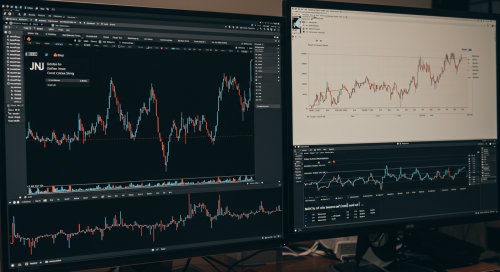
3. Major Headwinds and Risks to Watch
A balanced analysis requires acknowledging the significant challenges JNJ faces.
a) The Stelara Patent Cliff
This is the biggest and most immediate risk. Stelara, a mega-blockbuster drug for treating psoriasis and Crohn’s disease, generates over $10 billion in annual sales. Its primary patents have expired, and biosimilar competition is expected to begin in the U.S. in 2025.
H2 2025 Outlook: The second half of 2025 will reveal the initial impact of this competition. The key question for the stock will be whether JNJ’s growth from MedTech and new drugs can successfully outpace the inevitable decline in Stelara’s revenue. Management’s guidance on this “erosion curve” during earnings calls will be heavily scrutinized.
b) The Talc Lawsuit Overhang
For years, JNJ has been battling tens of thousands of lawsuits alleging that its talc-based baby powder caused cancer. This has created a persistent negative sentiment around the stock. JNJ’s strategy has been to use a subsidiary bankruptcy filing to reach a global settlement, but this has faced legal challenges.
H2 2025 Outlook: While JNJ has financially ring-fenced the liability from its core operations, negative headlines can still weigh on the stock price. Any definitive progress toward a comprehensive settlement would be a major positive, removing a dark cloud that has lingered for far too long. Conversely, further legal setbacks could continue to suppress investor enthusiasm.
4. JNJ Stock in H2 2025: An Analyst’s Verdict
When we synthesize the growth drivers and the risks, a clear picture of JNJ emerges for the second half of 2025.
- The Bull Case: The market begins to fully appreciate the “new” JNJ. Growth from the Abiomed and Shockwave acquisitions accelerates, Carvykti’s sales ramp-up exceeds expectations, and the market sees a clear path to offsetting the Stelara decline. Progress on the talc settlement removes a key overhang, leading to a re-rating of the stock as a premier defensive growth investment.
- The Bear Case: The Stelara sales erosion is faster and deeper than anticipated. The new MedTech acquisitions fail to meet their lofty growth targets, and the pipeline doesn’t produce the next blockbuster fast enough. The talc litigation continues to generate negative headlines, causing the stock to lag behind the broader market and its healthcare peers.
Conclusion:
Johnson & Johnson is a defensive giant in a calculated transition. It is shifting its center of gravity toward high-innovation areas in MedTech and specialized medicines. This is not a stock for investors seeking explosive, high-risk growth. Instead, it is best suited for long-term investors who prioritize stability, rising dividend income, and steady, deliberate growth.
For the second half of 2025, the narrative will be a tug-of-war between the old and the new. The key to a rising stock price will be demonstrating that the new growth engines are more powerful than the legacy headwinds. If JNJ can prove that its strategic acquisitions and innovative pipeline can successfully bridge the gap left by Stelara, then its stock could be poised for a period of steady appreciation, reaffirming its place as a core holding in any diversified portfolio.
Disclaimer: This article is for informational purposes only and is not intended as financial or investment advice. Always conduct your own research and consult with a qualified financial professional before making any investment decisions.

Hi, I’m Hibiki — the writer behind HealthManual.net.
I cover health insurance news, wellness tips, and insightful analysis of pharmaceutical and healthcare stocks. My goal is to simplify complex topics and make health and finance information more accessible to everyone.
Thanks for reading — I hope you find the content helpful and reliable.


